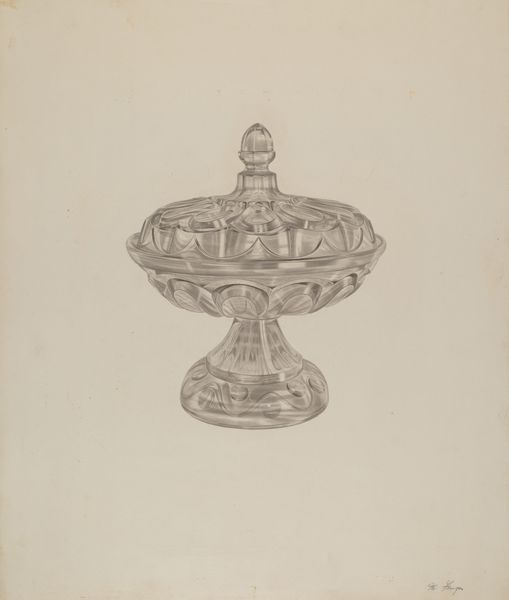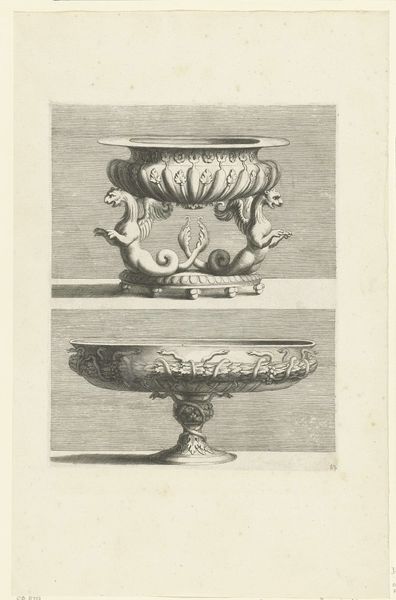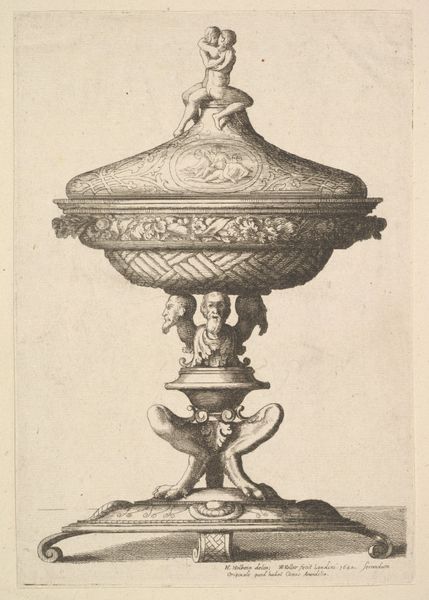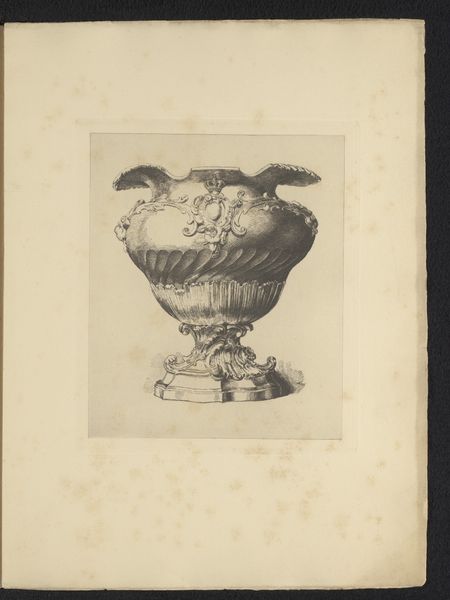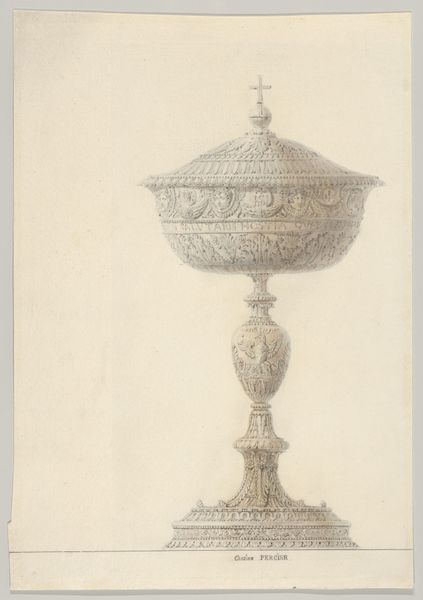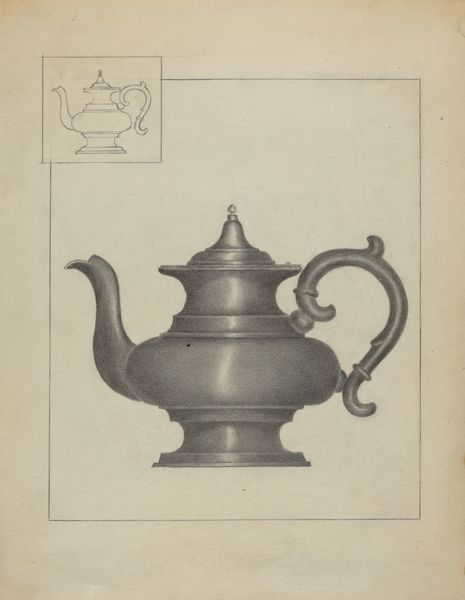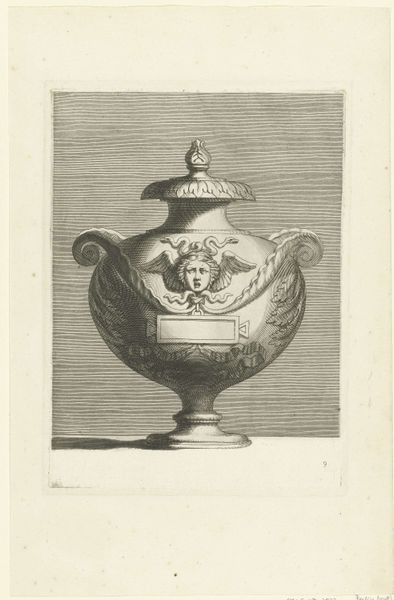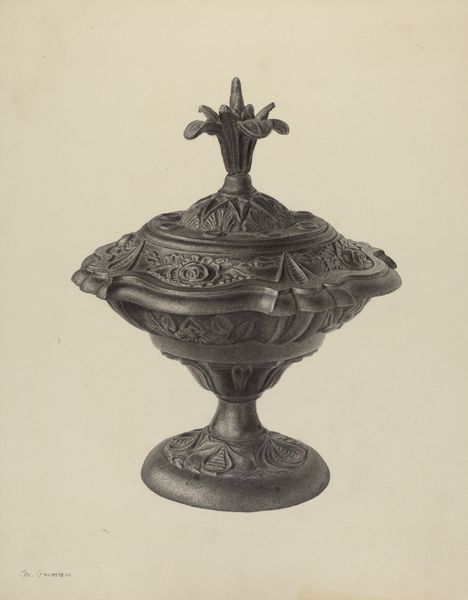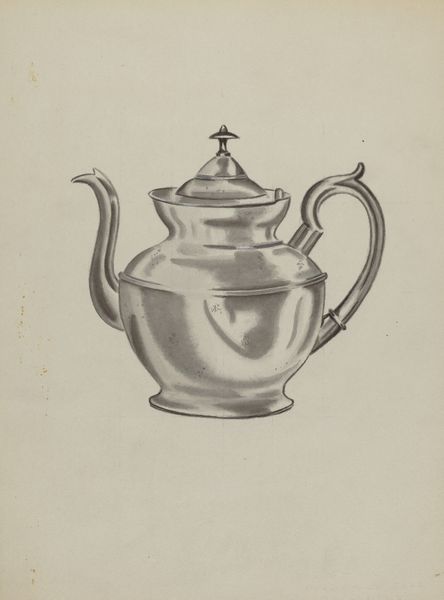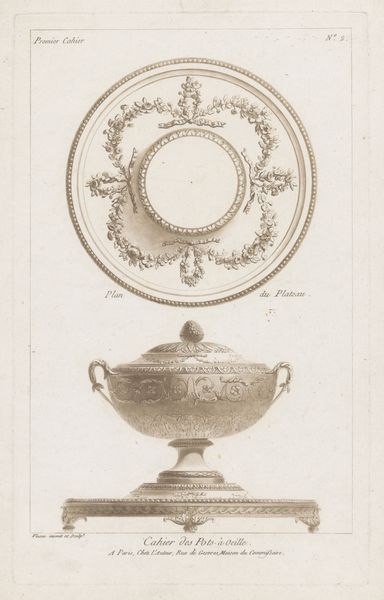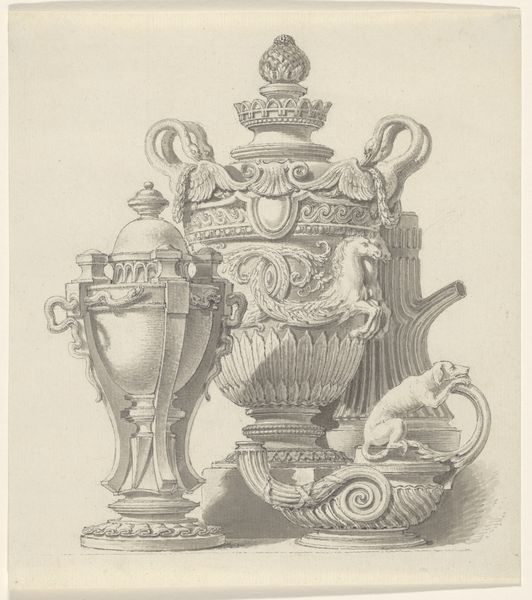
Drie geornamenteerde schalen en bokalen bedoeld voor een feesttafel 1830 - 1880
0:00
0:00
print, etching, engraving
# print
#
etching
#
decorative-art
#
engraving
Dimensions: height 244 mm, width 319 mm
Copyright: Rijks Museum: Open Domain
Curator: Here we have "Three Ornamented Bowls and Goblets Intended for a Festive Table," crafted sometime between 1830 and 1880. Adolphe Mouilleron's print combines etching and engraving to capture these extravagant pieces. Editor: My first thought is formality—the precision of the engraving perfectly suits the ostentatious quality of the silver pieces depicted here. The reflective quality almost glows despite the monochromatic palette. Curator: Consider the social context of dining in the 19th century. What messages were these kinds of ornamented vessels meant to send? Who was this material excess for? The rise of the bourgeois was absolutely intertwined with a performance of taste and affluence through objects just like this. Editor: I see layers of cultural symbolism. Think of the repetition of foliage, the ornate legs rising almost like animal claws--even the placement of floral arrangements. Are we meant to perceive these as trophies of the natural world brought inside to ornament the domestic sphere? Curator: Precisely! It goes to the very nature of consumption itself, a period when entire empires existed on resource extraction that created these decorative flourishes in some drawing room in Europe. Who benefited from this? Editor: What's particularly striking is the way that the arrangement evokes feasts of centuries past: the bowls become symbols of ritualistic bounty. Each vessel stands as an artifact communicating a tradition and the aspiration toward lavish displays. Curator: Do we read it uncritically, just enjoying it for being well made, or do we also hold its beauty accountable, understanding that a feast is also always an expropriation? I do appreciate the artist making visible the fine details inherent to these elaborate vessels while ensuring that we look beyond its aesthetic merit to the broader implications. Editor: Ultimately, looking closely at the way historical motifs can be repurposed gives us the possibility to reinterpret our own symbolic landscapes.
Comments
No comments
Be the first to comment and join the conversation on the ultimate creative platform.
